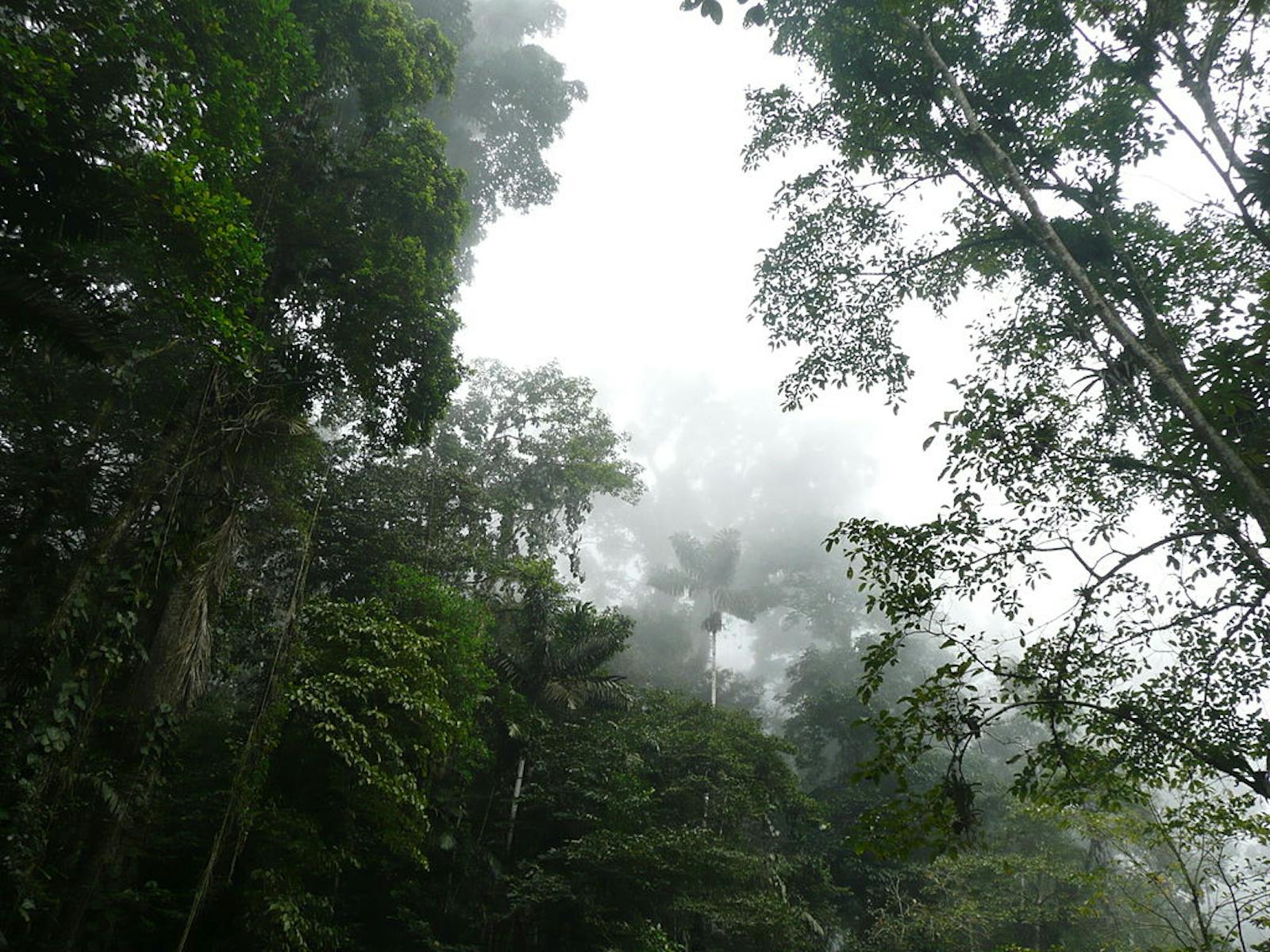Cordillera de la Costa Montane Forests
The ecoregion’s land area is provided in units of 1,000 hectares. The protection goal is the Global Safety Net (GSN1) area for the given ecoregion. The protection level indicates the percentage of the GSN goal that is currently protected on a scale of 0-10.
Bioregion: Venezuelan Coast (NT23)
Realm: Southern America
Ecoregion Size (1000 ha):
1,437
Ecoregion ID:
456
Conservation Target:
94%
Protection Level:
8
States: Venezuela
Once suspected to be extinct after 1986, the recently rediscovered Veragua stubfoot toad is endemic to the Cordillera de la Costa Montane Forests ecoregion. Like other Harlequin “frogs” (a misnomer) it prefers perched on rocks in and around swift-flowing streams where it spends most of its time. For a small toad, these stream habitats are very suitable to laying eggs and preying on small insects; on the other hand, in the rainy season these small streams can flood quickly and often carry them downstream either outside the remaining forest habitat or into the home range of another toad. Though small they can be fiercely territorial of their small creek side perch. The Veragua stubfoot toad is critically endangered and their few only small populations are restricted to the northern slope of the Henri Pittier National Park in Venezuela.
.jpeg)
The flagship species of the Cordillera de la Costa Montane Forests ecoregion is the Veragua stubfoot toad. Image credit: Indianacristo, Creative Commons
The Cordillera de la Costa Montane Forests ecoregion extends 720 km from east to west along the northern coast of Venezuela. It is composed of various enclaves that range from approximately 600 to 2,675 m in elevation. The montane forests are isolated from one another by dry vegetation. In the montane forests, the average annual temperature is between 10°-20°C and rainfall is between 1000–3000 mm per annum.
This ecoregion includes three forest types: Evergreen transition forests, evergreen montane cloud forests, and upper montane elfin forests and scrubs. Evergreen transition forests are found between 600 to 900 m elevation, and form a narrow belt between the lower montane semideciduous forests and upper montane forests. Here the giant endemic Gyranthera caribensis, reaching 60 m tall, emerges above the general forest canopy dominated by Trophis racemosa, Ficus macbridei, Tetragastris caracasana, Zanthoxylum ocumarense, and Banara nitida. Shrubs, large colonies of giant herbs, and many ferns populate the understory.
Evergreen montane cloud forests, from 1,000 to 2,200 m, are the most species-rich plant communities of the entire ecoregion. Palms are very frequent in the canopy and in the understory as well. Epiphytes are very abundant, while shrub and herb layers are usually dense and dominated by endemic species. Upper montane elfin forest and scrub is found above 2,000–2,400 m. The dominant species of scrub is Libanothamnus neriifolius, while in the low mossy forest the trees Clusia multiflora, Weinmannia spp., and Prumnopitys harmsiana are most prevalent.
This ecoregion is rich in species and is considered the most important endemic zones for flora and fauna in Venezuela. A survey of the ecoregion found in total 247 endemic plant species. Endemic birds are also prevalent. A total of 12 bird species are restricted to the entire ecoregion. The eastern Cordillera also includes 45 endemic subspecies, 13 of which are confined to the Paria peninsula.
All the eastern region endemic birds are considered threatened species. The scissor-tailed hummingbird, paria whitestart, Venezuelan flower-piercer, and grey-headed warbler are in critical danger. Pittier’s crab-eating rat is the only endemic mammal found, and is confined to the western region of the cordillera. At least 21 species of frogs and 11 species of reptiles are endemic to this region.

Northern helmeted curassow. Image credit: Greg Hume, Creative Commons
The ecoregion includes 11 national parks and five natural monuments. Governmental protection is insufficient, and most of the protected areas are threatened, except for El Avila, Henri Pittier, and Pico Codazi. Most remaining fragmented montane forests are restricted to higher elevations, where access is difficult.
Deforestation due to shifting cultivation has been responsible for most of the destruction of the original forests on the lower and middle mountain slopes. The lower montane forests of Peninsula de Paria are being altered and settled following the completion of a road leading to Macuro. A major threat to the remaining forests is frequent fires lit during the dry season in the already deforested and mostly savanna-covered, surrounding lower areas. Although fires usually do not penetrate the cloud forest itself, in some areas the adjacent montane evergreen forests are being severely reduced.
The priority conservation actions for the next decade requires more stable governance from Venezuela, but more specifically will be to: 1) strengthen the staffing and enforcement of the existing national parks and surrounding buffer zones; 2) limit road construction and tourist or residential projects near Key Biodiversity Areas; and 3) identify new areas of remaining native habitat for protection either as a national park or community managed sites.
Citations
1. B, Elisa. 2018. Northern South America: Northern Venezuela https://www.worldwildlife.org/ecoregions/nt0117 Accessed July 30, 2018.
2. Moore, N. and J. Beament 1989. Cambridge Columbus Zoological Expedition to Venezuela. Cambridge, U.K.
3. Stattersfield, A.J., M.J. Crosby, A.J. Long, and D.C. Wege. (1998). A global directory of Endemic Bird Areas. BirdLife Conservation Series. BirdLife International, Cambridge, U.K.
4. Jesús Manzanilla, Enrique La Marca, Ronald Heyer, Ernesto Fernández-Badillo. 2004.Atelopus cruciger. The IUCN Red List of Threatened Species 2004: e.T54502A11152124. http://dx.doi.org/10.2305/IUCN.UK.2004.RLTS.T54502A11152124.en. Accessed July 30, 2018.




